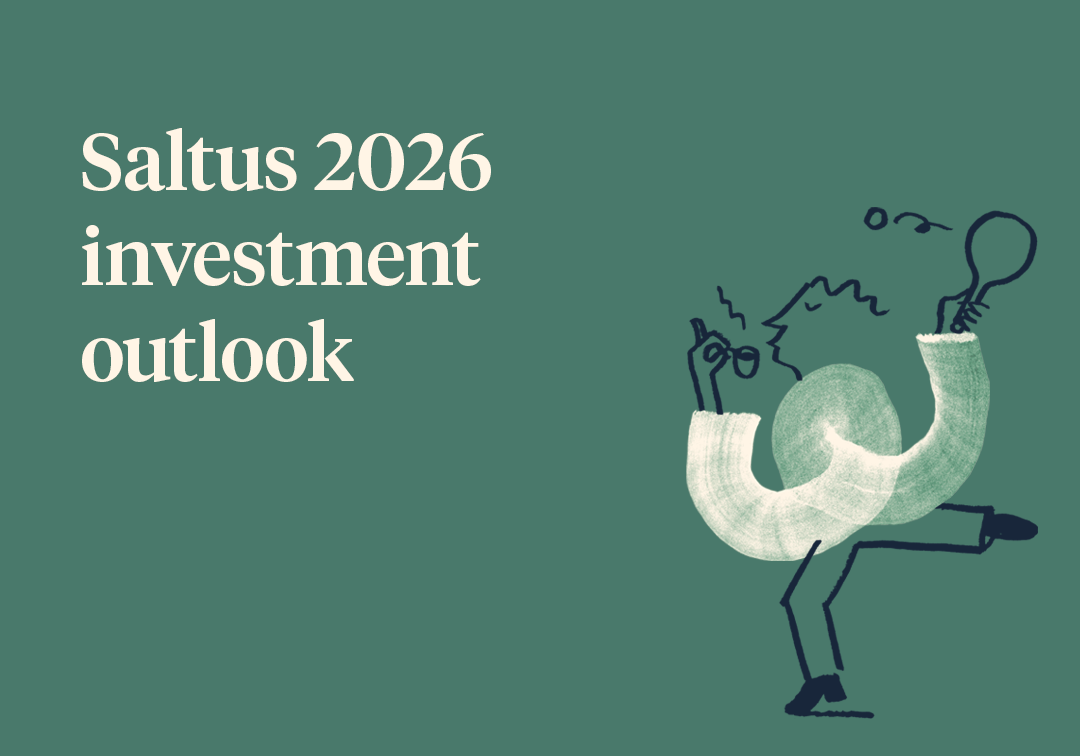If the data from Google Trends is anything to go by, the issue of inflation[1] and how to deal with it is very much on the minds of consumers and investors globally. Over the last three months, worldwide searches for the word ‘inflation’ and ‘hyperinflation’ have spiked to all-time highs after having remained largely off the radar since the data series began in 2005. Recent price rises have pushed a new generation to consider the impact of inflation more seriously after having largely been able to ignore it for decades. Change is clearly underway. Understanding and predicting the path of inflation is notoriously difficult but determining how to protect your wealth from it is fortunately more straightforward. There have been a number of historical inflationary periods that are useful references for constructing practical and successful inflation protection strategies in portfolios today.
Government Policy is changing
Given the most recent headlines on inflation[2] it is no surprise that the issue is front of mind for many. There are numerous reasons to believe that these headlines are short term in nature and will fade over time. There are, however, plausible longer term reasons as to why the threat has to be taken more seriously. The most important of these is perhaps that the ‘authorities’ in charge of managing inflation have either implicitly or explicitly changed their minds on the best way to deal with the problem. Governments who previously would have used fiscal policy as a brake on rising prices are no longer able to stomach the inequality in society which these polices can fuel. For populations tired of cutbacks and lockdowns, austerity is no longer a practical option in economic management.
Central banks have also looked for additional room to manoeuvre recently by changing the emphasis in their communications where they can and changing their mandates when that isn’t enough. The US Federal Reserve had the most impactful shift with changes in August last year[3] having profound implications for the future. An ad-hoc statement altered their objective to clarify that the 2% annual inflation target could now be achieved as an average over time. As US inflation has been running below the 2% target for years, the Fed was now signalling that it would tolerate a period of higher inflation in order to bring the overall average up to target. The most important monetary authority in the world had now explicitly stated that it would seek to generate high inflation as a matter of policy.
Watch our webinar
Protecting your most important assetIn conversation with Jack Munday and Jordan Gillies


History and Hyperinflation
Taken together with the shift in government spending patterns (to more rather than less), the guardians of the global financial system now seem set on allowing inflation to run higher and longer than they ever would have in the past. If this is the new investment reality, then it certainly makes sense to see if there are any historical lessons we can draw upon to protect portfolios from the consequences of this strategy.
A 200 year graph of annual UK inflation rates is a good starting point[4].
The first thing that strikes us is that inflation has nearly always been with us, particularly in modern times. Outside periods of war, depression or revolution (industrial in this case, rather than military) annual UK inflation has been positive every year, except for one, since 1935. A rise in the general level of prices is a fact of life for those of us who save and spend in pounds. Knowing that fact has allowed the investment community to test and develop strategies that have a reasonable chance of staying ahead of this reality.
The second thing that jumps out from the graph is that it really does take something seismic at a society level to push the rates of inflation beyond the normal ‘low single digit’ ranges we have become used to. The Napoleonic Wars, World Wars I and II, the Great Depression of the 1930’s and the oil crisis of the 70’s were all era defining periods of turmoil, which had the power to move inflation well beyond the normal experience.
The final observation would be that despite periods of high, low and persistent inflation, we haven’t ever experienced hyperinflation in the UK. This is a period usually defined as one where prices rise at exponential rates (over 50% a month or 12,874.63% per year) as the result of a total collapse in confidence in the institutions and systems of society at large. Although the UK has been spared this experience, many other nations have not. The memory of hyperinflation still exerts an influence in policy makers minds today.
Do you need help managing your investments?
Our team can recommend an investment strategy to meet your financial objectives and give you peace of mind that your investments are in good hands. Get in touch to discuss how we can help you.

Clearly, in an environment where annual prices changes are running at over 12,000%, cold economic logic no longer applies. Hyperinflation periods usually follow wars, when the productive potential of a society is physically diminished, debts are high and confidence about the ability to service those debts evaporates. Perhaps the most well-known example is the Weimar Republic of post WW1 Germany, a period during which a defeated nation tried to service huge external debts through excessive money printing. As there was no functioning economy to back the currency – nor any real asset such as gold – confidence in the value of the ‘Papiermark’[5] evaporated. Prices rose exponentially, with a loaf of bread priced at 160 Marks in 1922, spiralling to cost 200,000,000 Marks by late 1923.
If you are unfortunately caught in a currency system experiencing inflation at this rate, there are really not very many options for protecting your wealth. In essence, if your domestic currency is heading towards worthlessness the only thing to do is have your capital outside of that currency and, if possible, also outside of the local monetary system. In 1920’s Germany that wasn’t an option for most, but today at least, the ready accessibility of non-domestic investment portfolios provides individuals with a means of spreading risks outside of their domestic markets and currencies. These portfolios should have a wide diversification in assets both real ( i.e. those with tangible or intrinsic value) and financial ( i.e. contractual) value. Today there is also the option of having your money outside of the traditional financial system as a whole. Cryptocurrencies don’t require the presence of a central authority and buying, selling or storing them needs only internet access. Although a full analysis of the role crypto could play in a portfolio is for another day, it is fair to say that in the dystopian scenarios that come with hyperinflation, they could easily play a major role.
The conditions that preceded the Weimar period of hyperinflation do have some chilling echoes today, at least on the surface. Many Western nations have also been printing money in ever increasing amounts via various emergency programmes, designed to combat the Covid and financial crises. This is happening at a point when the amount of debt in the financial system is higher than it has ever been. The combination of these issues is undoubtedly a worry, but it is also one that is highly unlikely to lead to hyperinflation. The productive capacity of the planet to service its obligations has not been destroyed by war, but instead been put into cold storage by Covid and revived by vaccines. In many areas economies, households and corporations are actually stronger than they were pre-Covid.
Society at large is also still functioning well, with taxes still being collected and technological advances continuing to enrich and enable. Long-term disinflationary forces, such as the impact of aging populations, also remain in play. Overall, these factors make the hyperinflation risk low enough to remove from our worry list.
High inflation and how to protect your wealth
Unfortunately, the same cannot be said about the high inflation risk but this at least has a wide range of protection strategies available for mitigation. For example, there are a broad range of assets where returns are explicitly linked to the progress of inflation. These range from inflation linked bonds, both government and corporate, to inflation linked revenue streams from infrastructure assets in the transport and health sectors. Real assets, which have physical limits on their supply, can largely sidestep the issue of debasement that comes with the fiat money of today – produced by the stroke of a pen in unlimited quantities. We don’t need to remind any UK readers who own or rent property of the long running ability of that asset class to grow returns above the general rate of price increases. Commodities from industrial through to precious metals have long track records of usually, but not always, outperforming in inflationary environments.
The mainstays investments of most portfolios – stocks and bonds – also offer inflation proofing to different degrees. For equities. the ability to grow sales and profits over time, pay out dividends and then have them reinvested, opens up the wonderful power of compounding as a proven means of outpacing inflation over the longer term. The last 200 years of US equity returns, for example, have delivered 6.5% per annum after adjusting for inflation[6]. Tilting the style of equity holding to value investing could also open up a way of enjoying the benefits of real asset exposure at a discount[7] -something we have already positioned for across many of the Saltus portfolios.
With bonds it is harder to see how instruments with fixed payments should do well when the price of everything else is rising. However, by selecting the right managers, you can benefit from falling bond prices through selling or shorting. Many of the bond managers we employ have the ability to hedge out inflation, credit and interest rate risks giving them a broader toolset to cope with inflationary pressures.
So called ‘alternative strategies’ are something we consider our team to be specialists in. They can provide very credible sources of inflation protection. We look to use the volatility and uncertainty of inflationary periods to exploit mispricing between asset classes and geographies. Macro hedge funds are perhaps the best example of this. They use options and relative value strategies to profit from the changing expectations of interest rate and currency markets for global monetary policy. Convertible bond managers can also generally perform well in volatile environments where the option value embedded in their holdings increases in value, allowing them to arbitrage the profits out as the opportunities present themselves. Unsurprisingly, both types of strategy are currently enjoying something of a renaissance, re-emerging as potential beneficiaries of the uncertainty around interest rate policy.
All the strategies mentioned above are in the toolkit of a multi-asset class manager today. Whilst that doesn’t necessarily mean the manager will get it right, it does mean that something can be done to protect your wealth from any shift in the inflationary environment. The breadth of options available also offers the very real chance of building out a well-diversified set of inflation proof investments. In an environment where (to the retail investor) there seems to be fewer and fewer traditional options available to meet that goal, this will hopefully serve as a source of comfort for those looking to protect and grow their hard earned money.
[1] https://trends.google.com/trends/explore?date=all&q=inflation
[2] https://www.bbc.co.uk/news/business-59316544
[3] https://www.federalreserve.gov/newsevents/pressreleases/monetary20200827a.htm
[4] ONS
[5] https://en.wikipedia.org/wiki/Hyperinflation_in_the_Weimar_Republic
[6] http://www.econ.yale.edu/~shiller/data.htm
[7] See https://www.gmo.com/europe/research-library/part-2-what-to-do-in-the-case-of-sustained-inflation/
Do you need help managing your investments?
Our team can recommend an investment strategy to meet your financial objectives and give you peace of mind that your investments are in good hands. Get in touch to discuss how we can help you.

Article sources
Editorial policy
All authors have considerable industry expertise and specific knowledge on any given topic. All pieces are reviewed by an additional qualified financial specialist to ensure objectivity and accuracy to the best of our ability. All reviewer’s qualifications are from leading industry bodies. Where possible we use primary sources to support our work. These can include white papers, government sources and data, original reports and interviews or articles from other industry experts. We also reference research from other reputable financial planning and investment management firms where appropriate.
The views expressed in this article are those of the Saltus Asset Management team. These typically relate to the core Saltus portfolios. We aim to implement our views across all Saltus strategies, but we must work within each portfolio’s specific objectives and restrictions. This means our views can be implemented more comprehensively in some mandates than others. If your funds are not within a Saltus portfolio and you would like more information, please get in touch with your adviser. Saltus Asset Management is a trading name of Saltus Partners LLP which is authorised and regulated by the Financial Conduct Authority. Information is correct to the best of our understanding as at the date of publication. Nothing within this content is intended as, or can be relied upon, as financial advice. Capital is at risk. You may get back less than you invested. Tax rules may change and the value of tax reliefs depends on your individual circumstances.
Related blog posts
About Saltus?
Find out more about our award-winning wealth management services…
Winner
Top 100 Financial Advisers
Winner
Best Wealth Manager
Winner
Investment Performance: Cautious Portfolios
Winner
Top 100 Fund Selectors 2024
£9.7bn+
assets under advice
20
years working with clients
450+
employees
97%
client retention rate


